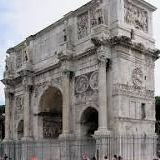
|
Arch of Constantine Via di San Gregorio, Roma, Italy ☎ +39 06 0608 Last Updated: 09/09/2023 |
| The Arch of Constantine, known in Italian as "Arco di Costantino," is a triumphal arch located in Rome, Italy. It is one of the most well-preserved and iconic Roman triumphal arches, celebrated for its historical significance and intricate reliefs. The arch was commissioned by the Roman Senate to commemorate Constantine's victory over Maxentius at the Battle of Milvian Bridge in AD 312. | |
| - History: The Arch of Constantine was constructed to commemorate the victory of Emperor Constantine I -Constantine the Great- in the Battle of Milvian Bridge in 312 AD. This battle played a crucial role in the rise of Christianity in the Roman Empire, as it led to Constantine's conversion to Christianity and his subsequent support for the religion. - Location: The arch stands near the Colosseum and the Roman Forum, two other famous landmarks in Rome, making it part of a historically rich and significant area in the city. - Architecture: The arch is built in the typical Roman triumphal arch style, with a central arched opening flanked by two smaller arches. It features Corinthian columns and intricate decorative reliefs. - Reliefs: The Arch of Constantine is renowned for its reliefs, which were taken from earlier monuments and reused in its construction. These reliefs depict scenes from earlier emperors' victories, such as Trajan, Hadrian, and Marcus Aurelius, reflecting a practice of -spoliation- common in Roman architecture. - Inscription: The arch bears an inscription in Latin that dedicates the monument to Emperor Constantine by the Roman Senate and the Roman people. - Iconography: The arch's decorative elements include statues of emperors and depictions of various gods and goddesses. Some of the most notable reliefs depict scenes from the Battle of Milvian Bridge and the distribution of largesse -gifts to the people- by Constantine. - Restorations: Over the centuries, the Arch of Constantine has undergone various restorations and repairs to maintain its structural integrity. It remains an impressive and well-preserved monument to this day. - Visitor Attraction: The arch is a popular tourist attraction and can be viewed from the street. Visitors often stop to admire its architectural and historical significance while exploring the nearby ancient Roman ruins. - Symbolism: Beyond its historical commemoration, the Arch of Constantine is significant for its role in the evolution of Roman art and architecture, representing a transition from the classical style to the Late Antique style. - Cultural Significance: The arch serves as a reminder of the pivotal moment in history when Emperor Constantine's conversion to Christianity changed the course of the Roman Empire and contributed to the spread of Christianity throughout Europe. The Arch of Constantine stands as a testament to the changing times and the enduring legacy of Roman architecture and culture. Its location in the heart of Rome, surrounded by other historic landmarks, makes it an integral part of the city's rich history and cultural heritage. | |
Website Wikipedia
Italy » Rome
Place » Historical Place
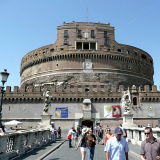
|
Castel Sant'Angelo Place » Historical Place The Mausoleum of Hadrian, usually known as Castel Sant'Angelo, is a towering cylindrical building in Parco Adriano, Rome, Italy. It was initially commissioned by the Roman Emperor Hadrian as a mausoleum for himself and his family. This architectural masterpiece has a rich history that spans nearly two millennia and has served various purposes throughout the centuries. 433 views 💖 10Lungotevere Castello, 50, 00193 Roma RM, Italy |

|
Spanish Steps Place » Historical Place The ‘Spanish steps’ in Rome, built in Rococo style between 1723 and 1726, are the steps that lead from the Piazza di Spagna square to the French monastery church Trinita dei Monti. There are 135 steps and three different terraces, referring to the Holy Trinity. The top of the stairs near the Egyptian obelisk offers a beautiful view, albeit one shared with throngs of other tourists. 16 views 💖 1Piazza di Spagna, 00187 Roma RM, Italy |

|
Rome Place » City Rome is the capital city of Italy. It is also the capital of the Lazio region, the centre of the Metropolitan City of Rome, and a special comune named Comune di Roma Capitale. With 2,860,009 residents in 1,285 km2 (496.1 sq mi), Rome is the country's most populated comune and the third most populous city in the European Union by population within city limits. 85 views 💖 1Italy |

|
Villa Borghese Place » Historical Place Villa Borghese is a magnificent historical park and cultural complex located in the heart of Rome, Italy. It is one of the largest public parks in the city and offers a wide range of attractions, including museums, gardens, a lake, and cultural institutions. 462 views 💖 300197 Rome, Metropolitan City of Rome Capital, Italy |
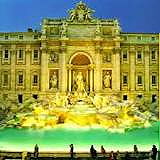
|
Trevi Fountain Place » Historical Place The Trevi Fountain is an 18th-century fountain in the Trevi district in Rome, Italy, designed by Italian architect Nicola Salvi and completed by Giuseppe Pannini and several others. Standing 26.3 metres (86 ft) high and 49.15 metres (161.3 ft) wide, it is the largest Baroque fountain in the city and one of the most famous fountains in the world. 381 views 💖 5Piazza di Trevi, 00187 Roma, Italy |
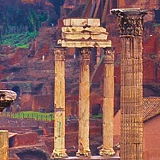
|
Roman Forum Place » Historical Place The Roman Forum, known in Italian as "Foro Romano," is a historic and archaeological site in the heart of Rome, Italy. It was once the center of political, religious, and commercial life in ancient Rome and is now a prominent archaeological complex that offers visitors a glimpse into the city's rich history. 484 views 💖 10Via della Salaria Vecchia, 5/6, Roma, Italy |
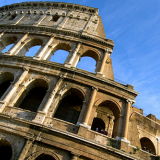
|
Colosseum Place » Historical Place The Colosseum is an iconic amphitheater located in Rome, Italy, and is one of the most recognizable landmarks in the world. Also known as the Flavian Amphitheatre, it was built in AD 70-80 and is considered one of the greatest engineering feats of the ancient Roman Empire. 472 views 💖 10Piazza del Colosseo, 1, 00184 Roma, Italy |
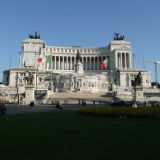
|
Victor Emmanuel Monument Place » Historical Place Officially known as the Monumento Nazionale a Vittorio Emanuele II, the enormous white marble monument that dominates Piazza Venezia was built as a tribute to the first king of a united Italy, Victor Emmanuel II. 426 views 💖 3Altare della Patria, Piazza Venezia, 00186 Roma, Italy |
